Standard Cartridge Filter Housings
Standard cartridge filter housings are pressure-rated enclosures designed to hold replaceable filter cartridges that trap contaminants such as sediment, rust, chlorine, and microplastics. These housings are critical in safeguarding downstream equipment in reverse osmosis (RO) plants, industrial processes, and municipal water systems.Manufactured from materials like polypropylene (chemical resistance), stainless steel (AISI 304/316) for high-pressure and high-temperature environments, and PVC for cost-effective setups, these housings accommodate cartridges in standard sizes (5”–40”) — including popular 10-inch and 20-inch configurations.
Common Applications in Water Treatment & Industry
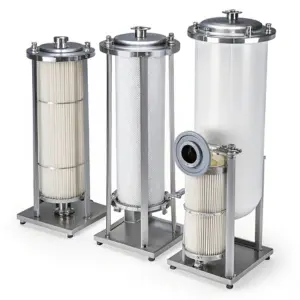
Pre-filtration
Used before RO membranes to remove particulates that could clog or degrade system performance.
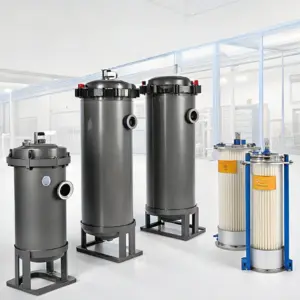
Industrial Processing
Deployed in pharmaceuticals, chemicals, beverage production, and automotive plants where process water purity is essential.
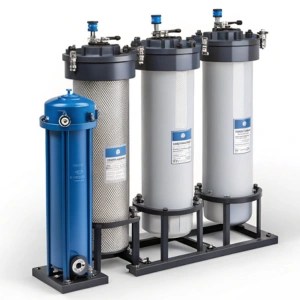
Municipal Water Systems
Supports large-scale treatment plants, greywater recycling, and seawater desalination operations.
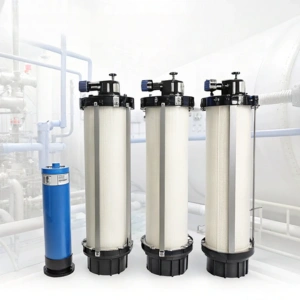
RO Plants
Standard cartridge filter housings are the first line of defense in RO systems, protecting delicate membranes from particulate damage.
Key Features of High-Performance Filter Housings
Material Versatility
Polypropylene: Ideal for corrosive chemical solutions.
Stainless Steel: Withstands extreme pressure and temperatures.
Size Flexibility
10-inch Cartridge Housing: Best for compact, low-flow systems like labs or under-sink RO units.
20-inch Filter Housing: Suited for industrial systems demanding high flow rates and longer run times.
Operational Ratings
Handles up to 150 PSI and 140°F (60°C).
Suitable for harsh and dynamic process environments.
User-Friendly Maintenance
Transparent filter bowls allow for visual inspection.
Quick-release clamps simplify filter changes, minimizing system downtime.
Real-World Advantages in RO Plants & Industrial Systems
Protects Critical Components: Reduces the risk of clogs in RO membranes, UV sterilizers, and dosing pumps.
Minimizes Downtime: Cartridge replacement takes minutes, ensuring uninterrupted operations.
Regulatory Compliance: Many housings meet NSF/ANSI 61 and ISO 9001 standards, ideal for certified facilities.
Choosing the Right Size: 10-Inch vs. 20-Inch Filter Housings
| Parameter | 10-Inch Housing | 20-Inch Housing |
|---|---|---|
| Flow Rate | 5–20 GPM | 20–100 GPM |
| Cartridge Lifespan | Shorter (frequent changes) | Longer (higher dirt capacity) |
| Best Use Case | Small labs, household RO units | Factories, large-scale water systems |
Maintenance Best Practices
1
Monthly Visual Check: Inspect O-rings, housing threads, and pressure gauges.
2
Cartridge Replacement: Change when differential pressure exceeds 15 PSI to prevent bypass or rupture.
2
3
Quarterly Sanitization: Use a 100 ppm chlorine solution or manufacturer-approved biocide to prevent microbial fouling.
4
Documentation: Keep a log of filter changes and pressure readings to track performance trends.
4
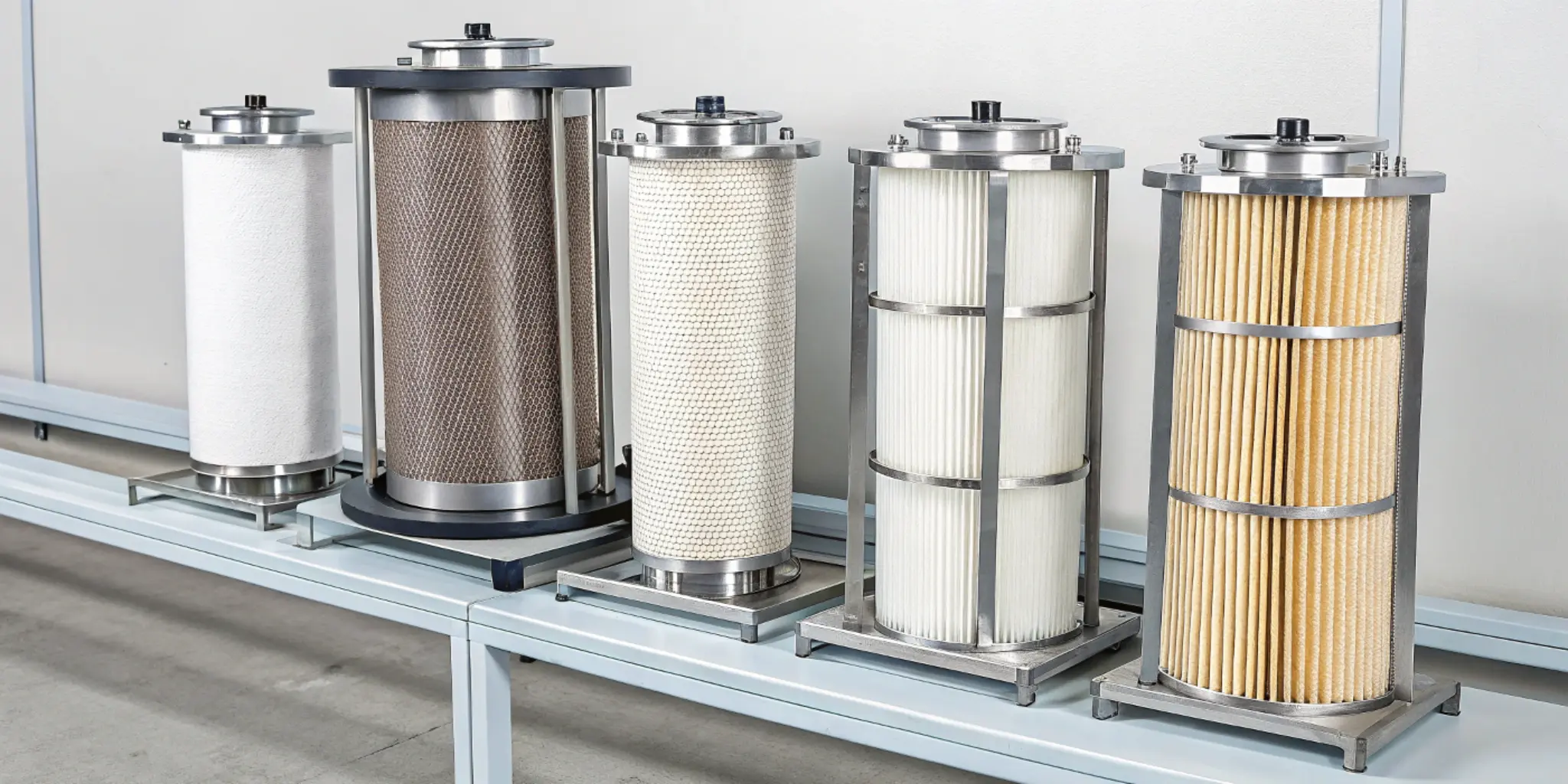
Why Standard Sizing Matters
Interchangeability
Compatible with industry-standard filter cartridges (1”, 2.5”, and 4.5” diameters) from brands like Pentair, 3M, and Hydronix.
Scalability
Combine multiple housings in parallel to achieve flow rates of 50+ GPM without custom fittings.
Inventory Efficiency
Using standardized filters across systems reduces storage costs and simplifies procurement.
Frequently Asked Questions
1. What is a cartridge filter housing used for in RO systems?
A cartridge filter housing in an RO system acts as a pre-filtration barrier, removing particles such as sediment, rust, and microplastics before they reach sensitive RO membranes. This extends the membrane lifespan, maintains flow rate efficiency, and ensures better water quality.
2. What is the difference between a 10-inch and 20-inch cartridge filter housing?
• A 10-inch filter housing is compact and ideal for low-flow systems (5–20 GPM), such as household RO units or lab setups.
• A 20-inch filter housing supports higher flow rates (20–100 GPM) and is used in industrial or municipal applications. It also allows longer intervals between filter replacements.
3. How do I choose the right size filter housing?
To choose the right filter housing:
• Estimate flow rate: Choose 10-inch for <20 GPM; 20-inch for 20–100 GPM.
• Consider cartridge type: Ensure compatibility with standard diameters (2.5″, 4.5″).
• Evaluate contaminant load: Higher dirt load requires larger or multiple housings.
4. Are cartridge filter housings standardized?
Yes, most filter housings follow standard industry sizes, allowing interchangeability with brands like Pentair, 3M, and Hydronix. Common lengths are 10″, 20″, and 30″, with diameters of 2.5” (slim) or 4.5” (big blue).
5. What materials are best for filter housings?
• Polypropylene: Best for chemical compatibility and corrosion resistance.
• Stainless Steel (304/316): Ideal for high-temperature or high-pressure applications.
• PVC or FRP: Cost-effective for less demanding environments.
6. How often should filter cartridges be replaced?
Cartridges should be replaced when the pressure drop exceeds 15 PSI, or based on manufacturer guidelines (typically every 2–6 months depending on usage and water quality). Delaying changes can result in membrane fouling and reduced system efficiency.
7. Do cartridge filter housings meet water safety standards?
Many industrial-grade housings are certified to NSF/ANSI 61 for drinking water safety and ISO 9001 for quality management. Always verify certification when selecting for municipal or food-grade applications.
8. Can I connect multiple filter housings for higher flow rates?
Yes. Multiple housings can be connected in parallel to increase flow rate or in series to enable staged filtration (e.g., sediment → carbon → polishing filter). This modular setup offers scalability and redundancy.
